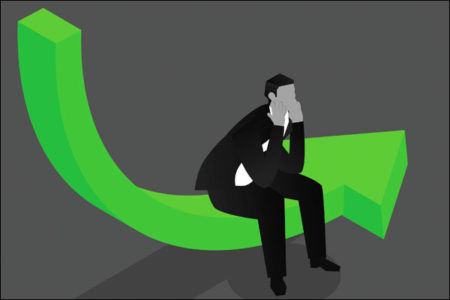
The stock market has seen its share of peaks and valleys over the years. The peaks can be a euphoric time with the rapid growth of account market values and the accompanying wealth effect. Conversely, the valleys can have just the opposite effect—both fiscally and mentally. To see your statement market value moving in the wrong direction can bring about a feeling of helplessness. Many people need a certain performance return on their savings to meet daily living expenses or to one day comfortably retire, and the equity market has historically proven to be an effective place to meet the necessary return. We need the good, but would prefer to avoid the bad (risk!). So, how should an investor react to the recent market pullback?
Risk always seems to carry with it a negative connotation. But everyone must accept some level of risk in their day-to-day lives—from driving a car to purchasing a house. The stock market is no different—the key is to understand the inherent risks and create a portfolio with the best probability of a good outcome. Holding securities that are traditionally less volatile than the market and diversifying between the S&P 500 sectors are two tools with a proven track record for minimizing risk. Still, a better understanding of the probability of good and bad outcomes doesn’t eliminate anxiety during the pullbacks.
Famed fund manager Peter Lynch said, “The key organ here isn’t the brain, it’s the stomach. When things start to decline—there are bad headlines in the paper and on television—will you have the stomach for market volatility and broad-based pessimism that tends to come with it?” Mr. Lynch is describing the very predicament we find ourselves in today (S&P 500 -23.9% YTD). A second quote from another legendary investor, Warren Buffett, provides a concise reason to “stomach” that very market volatility and the worrisome downturns. Buffett said, “The stock market is a device for transferring money from the impatient to the patient.”
There are two sides to every trade and the patient investor is typically on the right side. The impatient tend to be more reactionary to short-term events and sell just when they should be buying. It obviously takes more than patience to build a winning portfolio. An investor needs to be patient with good companies—enterprises with proven business models, strong managements, and solid balance sheets. Reliable cash flow and sustainable debt levels will help those companies weather almost any recession.
Since the turn of the century, we have seen three significant pullbacks in the S&P 500 (greater than 20% declines). After the dot-com bubble in the early 2000s, technology companies with wildly high valuations, without the revenue or earnings to support those numbers, didn’t make it through. In 2007 through 2008, it was the financial companies with exposure to subprime loans and unstainable debt levels that were the victims of the Great Financial Crisis. During the COVID-19 crash in 2020, most publicly traded companies made it through, after governments around the world provided much-needed stimulus during a unique time of uncertainty.
Today’s downturn is really just an offshoot of the 2020 decline. Fiscal and monetary policy enacted to combat the COVID-19 economic disruption resulted in generational inflation (7.7% Annual CPI for October 2022). The Federal Reserve is now in the midst of a series of rate hikes in an effort to stamp out that inflation. Difficult days lie ahead, but the patient investor with a portfolio full of financially sound companies will likely come out on top. The stock market has proven itself to be a wonderful place to build wealth over the years. It’s not without its faults, but history can provide many examples of the market rebounding from lows to all-time highs. One last quote from Mr. Buffett perfectly highlights a final reason to “stomach” the market: “If you don’t find a way to make money while you sleep, you will work until you die.”
David M. Layden, Portfolio Manager
